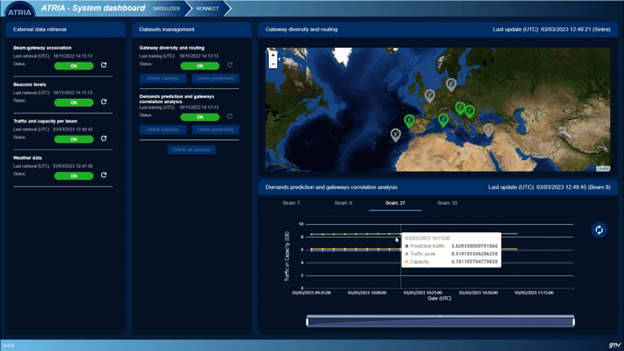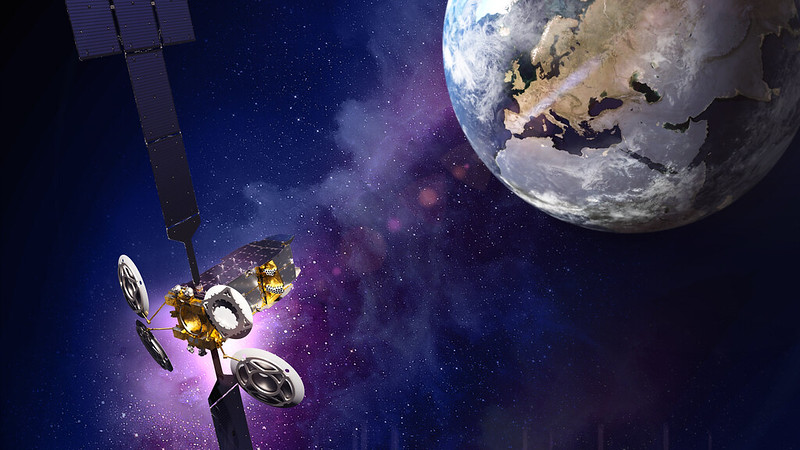Authors: Katja Vornberger, Jannis Mainczyk and Rainer Wansch
Simulating satellite systems is a crucial task for researchers and engineers who design and develop these complex systems. In particular, a link-level emulator can provide valuable insights into the performance and behaviour of satellite systems, including the effects of different payloads and beamforming techniques. In ATRIA, a link-level emulator for flexible payloads with beamforming capabilities is developed by Fraunhofer IIS in collaboration with OHB.
One of the critical features of the link-level emulator is the ability to model flexible payloads. These are payloads that can be reconfigured on-the-fly by means of a digital transparent processor (DTP) to adapt to changing conditions and requirements. For example, a flexible payload may be able to dynamically adjust the onboard interconnections between uplink and downlink as well as dynamically adjust the antenna beam patterns to optimize the link performance.
Our link-level emulator for satellite systems is able to also model the effects of beamforming. This is the process of shaping the radiation pattern of an antenna array to achieve the desired gain and directionality. By carefully controlling the phase and amplitude of the signals transmitted by each antenna element, it is possible to steer the main beam of the array in a particular direction or to create multiple independent beams to serve multiple users simultaneously.
Ground stations are also an important component of any satellite communication system, so the link-level emulator is also able to model the effects of different ground station configurations. This includes the type and number of antenna elements and their physical arrangement and orientation. By modelling different ground station configurations, it is possible to evaluate their performance and identify the optimal configuration for a given scenario, including seamless switching of carriers across multiple ground stations.
Furthermore, the link-level emulator is able to simulate the effects of weather on the communication channel. This is particularly important for satellite systems, as the ionosphere and the atmosphere can introduce significant disturbances and impairments that affect the quality of the received signal. By modelling these effects, it is possible to evaluate the robustness and resilience of the satellite system to weather conditions and to identify mitigation strategies to improve the performance in adverse scenarios.
Overall, the ATRIA link-level emulator for satellite systems with flexible payloads and beamforming capabilities is a valuable tool for researchers and engineers working on next-generation satellite payloads. By providing a detailed and accurate model of next-generation satellite systems, the emulator can help to optimize the design and performance of these systems, and ultimately improve the quality and reliability of future satellite communication applications.


